How to save time during transitions in triathlon?

- 1. Understanding the Importance of Transition in a Triathlon
- - The Role of Transitions in Your Triathlon Performance
- - How to Mentally Prepare for the Transitions
- 2. Building Your Transition Skills: Pre-race Preparation
- - Developing a Step-by-Step Process for Transitions
- - Shopping List: Essential Items for Fast Transitions
- 3. Mastering T1: Swim to Bike Transition Tips
- - Critical Techniques to Speed Up Your Wetsuit Removal
- - Guideline for Organizing Your Transition Area
- - How to Optimize Your Bike Mount and Start
- 4. Tackling T2: Bike to Run Transition Strategies
- - Key Tips for Optimizing Your Transition Area Layout
- - Key Techniques to Speed Up Your Bike Dismount
- - Transforming from a Cyclist to a Runner: Mindset and Practical Tips
- 5. Common Transition Mistakes and How to Avoid Them
- 6. Boosting Transition Efficiency Through Training and Practice
- - The Role of Simulation Training in Transition Practice
- - Conditioning Your Body for Quicker Transitions
- 7. Measuring Improvement: How to Gauge Your Transition Success
1. Understanding the Importance of Transition in a Triathlon
Understanding the importance of transition in a triathlon could be the vital ingredient that many athletes often overlook. In fact, transitions are the hidden discipline in triathlons, it's where the race can often be won or lost. Imagine improving your swimming, cycling, and running skills only to lose valuable time by fumbling during transitions. The seamless changeover between swimming, cycling, and running can drastically improve your overall performance and is as equally vital as mastering each discipline separately. A well-executed transition not only saves precious seconds, but it also conserves your energy, mentally prepares you for the next phase, and could be your winning edge. Remember, a smooth transition is indeed the fourth discipline in a triathlon. So, are you giving it the attention it deserves?
- The Role of Transitions in Your Triathlon Performance
The Role of Transitions in Your Triathlon Performance is often underestimated, yet pivotal, in determining your overall finishing time. To achieve a competent and seamless triathlon performance, successful transitions between swimming, cycling, and running stages are essential. Transitions can be perceived as the "fourth discipline" in triathlon, requiring as much attention as your swim, bike, or run training. Acting as a bridge between each segment, the transition space acts as your personal pit stop. Therefore, efficiency, speed, and organization in this area directly impacts your overall performance. The two transitions, T1 (swim to bike) and T2 (bike to run), are not merely about changing your equipment, but also about mentally adjusting to the demands of the next discipline hurriedly and effectively. It’s during these moments that the race can be won or lost, with smoother changeovers saving valuable seconds and giving you the edge over competitors. Thus, an effective transition is not an easy feat, especially when racing against the clock. Yet, with proper preparedness and practice, mastering these transitions can lead you to a significant breakthrough in your triathlon performances. After all, every second count in a high stakes race like a triathlon, don’t they?
- How to Mentally Prepare for the Transitions
Transitioning from one race segment to another in a triathlon demands mental toughness as much as physical agility. It's not simply about moving - it's about adapting. In the mist of exertion, your mind must be ready to switch gears, to realign your thoughts from swimming to cycling, or from biking to running. How are you to ace this mental game, you ask? Well, the answer lies in preparation and visualization. Start by picturing each phase in your mind. Create a vivid mental video of the sequence of actions you will take - right from removing your wetsuit to mounting your bike, and later shifting to the run. Engage your senses. Hear the crowd cheering, feel your pulse soaring, even taste the sweat pouring down your face. And in this vision, see yourself succeeding. Picture every motion flowing smoothly, swiftly, efficiently. This sends a strong message to your brain that you CAN achieve what you've envisioned. Next, practice mindfulness. It helps maintain focus and prevent panicking if things do go wrong. Breathe. Keep your thoughts on the present, not on what just happened or what's yet to come. Finally, cultivate a growth mindset. Don't fear mistakes or setbacks - learn from them. Remember, it's these challenges that really strengthen your mental muscle in the triathlon game. Keep reminding yourself that you're becoming a better athlete with each transition you conquer. Learning how to mentally prepare for your triathlon transitions is an essential step onwards your journey to victory. It aids in reducing anxiety and boosts your overall performance. So, gear up, envision, and get ready to make those transitions your winning edge on the race day. With resilience and practice, you're sure to ace the mental game in triathlon transitions.
2. Building Your Transition Skills: Pre-race Preparation
In the thrilling world of triathlon, the moments between disciplines, known as transitions, hold the power to make or break your race day outcome. Cementing a winning edge demands pre-race preparation, which pivots on two main elements: planning and practice. You need to develop a roadmap for your transitions, incorporating every minute detail, from gear placement to strategies that facilitate speedy changeovers. Equip yourself with the right items, aptly serving as your transition toolkit, as they greatly influence the swiftness of transitions. Walking into a race unprepared is like setting yourself up for failure. Meticulous preparation gives you a reliable safety net, boosts your confidence, and paves the path for a successful triathlon performance.
- Developing a Step-by-Step Process for Transitions
Developing a step-by-step process for triathlon transitions is paramount to improving your overall performance. This may sound tedious, but in reality, it's quite simple. It all begins with meticulous planning. Have a clear idea of what equipment you need for each phase of the competition and make a checklist. Think about the process of changing from one discipline to another. Consider what actions must come first, second, third, and so forth for both the swim-bike transition (T1) and the bike-run transition (T2). By breaking down these major transitions into a series of smaller tasks, you'll reduce the likelihood of getting overwhelmed and making costly mistakes. Also, practice is key. Run through your transitions plenty of times before race day in different conditions - you'll find that routine becomes your biggest ally. Remember, every second counts! Lastly, always stay adaptable. No matter how much you prepare, there'll always be unforeseen circumstances on the big day. Train your mind to adapt quickly and overcome any obstacles. That's the beauty of triathlons - they're as much a mental test as they are a physical one. So start planning, training, and adapting. Your transition success is in your hands!
- Shopping List: Essential Items for Fast Transitions
Transitioning efficiently during a triathlon can make all the difference in your timing and performance. Hence, it's essential to be fully equipped with the right tools to enable this. The shopping list for fast transitions comprises various essential items to streamline your race against the clock, and here they are. Firstly, a wetsuit lubricant is paramount. It helps ensure a quick wetsuit removal. Meanwhile, keep a towel handy to quickly dry your feet before slipping into cycling shoes. Also, investing in a professional-grade triathlon transition bag can keep all your requisites neatly sorted. It's crucial to have an easy-to-handle helmet and pair of sunglasses set up on your handlebars to quickly transition from swim to ride. Cycling shoes that clip directly into your bike's pedals and a race belt to hold your race number allow for speedy changeovers. In addition, elastic laces for your running shoes facilitate rapid on and off during the second transition. But remember, the best gear won't help if you don't know how to use it properly! Therefore, consistent practice using these items will dramatically enhance your transition speed. Lastly, mental preparation is also significant, as organizing yourself and keeping a cool head under those high-pressure moments is pivotal to fast transitions. You've got your shopping list, go get those items and start practicing!
3. Mastering T1: Swim to Bike Transition Tips
Conquering T1, the first transition from swim to bike in a triathlon, can significantly boost your performance and set you up strongly for the rest of the race. Speed is essential, but so is efficiency. Firstly, make sure you master swift wetsuit removal. Practice makes perfect in this case - have a method and stick to it. Organizing your transition area is another vital step. Layout all your cycling equipment in order of how you'll need them, thinking about how to minimize movements. Finally, an optimized bike mount can secure a smooth start to your cycling stage, so rehearse jumping onto your bike to hit the road fast. Remember, T1 isn’t just a break, it’s an integral part of the race!
- Critical Techniques to Speed Up Your Wetsuit Removal
Diving into triathlon transitions, one pivotal skill to master is the swift removal of your wetsuit during your T1, or swim to bike transition. Having quick hands and a systematic approach can make a significant difference to your transition times. Have you ever asked yourself why some athletes seem to slip out of their wetsuits with such ease, while others wrestle with them, squandering precious time? Let's delve into some critical techniques to enhance your wetsuit removal speed. Firstly, using a wetsuit lubricant is advantageous. It can aid in removing your suit promptly by reducing chafing between the suit and your skin. Also, consider having a long pull cord for your zipper. It allows easier access to unzip your wetsuit, therefore, accelerating the removal process. Another practical step is learning to roll your wetsuit down to your waist as you run towards the transition zone, giving you a head start in taking it off. Furthermore, practicing the "stripper" technique —pulling your wetsuit down in one swift motion from the waist— may be beneficial. However, remember to span out your practice to master these techniques and adapt them to your personal transition strategy. Speeding up your wetsuit removal is, after all, a game of inches gained through consistent, well-rehearsed tactics. Next up, let's look at organizing your transition area...
- Guideline for Organizing Your Transition Area
Organizing your transition area in a triathlon is a crucial aspect of ensuring smooth transitions and ultimately, a stellar performance. Preparations should include not only your physical organization but also your mental roadmap. Begin by familiarizing yourself with the layout of the transition area, paying careful attention to entrances and exits. Clearly marked gear is a must. Use bright and distinctive markings to facilitate quick identification amidst the ocean of other competitors' equipment. Order of placement is also critical: wetsuit and goggles are first, followed by cycling shoes, helmet, and bike. Lastly, place your running shoes and hat. Minimize clutter to reduce chaos and confusion, keeping only essential items. One important but overlooked detail is the positioning of your shoes. Unbuckling your cycling shoes beforehand can shave off critical seconds during transition. Remember, each action in the transition area should be methodical and precise, almost like a rehearsed dance. The calmer and more organized you are, the faster and more efficient your transitions will be. Ultimately, the key to a well-organized transition area lies in meticulous preparation and serious practice. It might seem like a small detail in the grand scheme of a triathlon, but it is a detail that can greatly affect your overall race performance.
- How to Optimize Your Bike Mount and Start
Optimizing your bike mount and start is a vital step towards boosting your overall transition time in a triathlon. But how can you make this happen? Taking off right starts with having your gear set up flawlessly. With your helmet, sunglasses, and cycling shoes arranged for easy access, you can swiftly gear up right after the swim. Position your bike just right, with your pedals at the 3 o’clock position for a speedy getaway. Practice makes perfect! Utilize training days to improve your mount skills and biking start. Be familiar with mounting the bike while in motion, using a mix of speed, agility, and balance. This is coined as the flying mount! It's challenging, but nailing it can shave seconds or even minutes off your total transition time. But remember, speed isn’t everything here. Safety is a priority. Being hasty could lead to accidents which will cost more time or worse, result in injuries. So, exert full control and consider your surroundings before hopping on your bike! As the saying goes, "Slow and steady wins the race", but in this case, "swift but safe wins the triathlon". It isn't always the fastest who wins, but those who can combine speed with smooth execution. Does this sound like something you're capable of? If not yet, with patience and regular practice it soon will be!
4. Tackling T2: Bike to Run Transition Strategies
The transition from the bike leg to the running leg in a triathlon, often referred to as T2, requires strategic planning and execution for optimal performance. Effective T2 transition strategies primarily focus on ensuring the layout of your transition area minimizes time wasted. However, achieving a speedy bike dismount, as well as swiftly changing your mindset from cyclist to runner, are equally critical. Tailoring your training to incorporate rapidly shifting gears, both physically and mentally, can drastically reduce transition times and increase race performance. Remember, the key lies not only in speed, but also adapting to the incoming race sector. So how do you tackle T2 effectively? Let's delve into that in our upcoming sections.
- Key Tips for Optimizing Your Transition Area Layout
Optimizing your transition area layout is vital for a seamless transition during a triathlon, especially when transitioning from biking to running, commonly known as T2. The layout of your gear can make or break these crucial minutes. Therefore, it's critical to meticulously plan and organize your transition area. Here are a few key tips to accomplish this: Firstly, keep your transition area clean and uncluttered. Having a chaotic transition area can lead to mistakes and unnecessary loss of time. Everything you need should be laid out efficiently and logically. Secondly, establish a fluid routine for your transition. Your gear should be placed in the order that you will need them, making your transition smoother and faster. It’s about efficiency, not speed. Thirdly, rehearsing your transition can be incredibly beneficial. This allows you to identify any potential issues beforehand and reduce the likelihood of errors on the race day. Lastly, remember that each triathlon and each transition is unique. What works best for one may not necessarily work for another. So, always be ready to adjust your strategy based on the specifics of the race. Being organized and prepared can significantly improve your transition efficiency, allowing you to save valuable time and energy during the race. Make these considerations part of your triathlon strategy and notice the difference in your performance.
- Key Techniques to Speed Up Your Bike Dismount
An efficient and swift dismount from your bike is an essential part of your transition during a triathlon. This step, while very often overlooked, can greatly influence your overall race time. With the right approach and techniques, you can shave precious seconds off your transition time, giving you an edge over other runners. Firstly, the "Flying Dismount" is a popular method used by many triathletes. Instead of coming to a complete halt before getting off the bike, athletes slow their speed gradually and swing one leg to the other side of the bike while still moving. This reduces any unnecessary standstill time. However, this technique requires practice to grip the bike handle steadily when you are on the move. It's crucial to always take precautions and ensure safety first. Further, physical preparation is equally important as technical skills. Lower body strength and flexibility play a significant role in your ability to swiftly get off the bike. Incorporating strengthening exercises and stretches in your workout may make your transitions smoother and faster. Lastly, remember to rehearse your bike dismount in different conditions. This lets you adapt to various racing circumstances, from hilly terrains to wet weather. Remember, perfecting these techniques and integrating them into your transition strategy can drastically improve your overall performance in a triathlon.
- Transforming from a Cyclist to a Runner: Mindset and Practical Tips
Transitioning from a cyclist to a runner in a triathlon might sound simple, but it can be one of the most challenging aspects of the race. The sudden change in gear, technique, and muscle utilization can be jarring, even for seasoned athletes. To smooth this transition, it's essential to cultivate a winning mindset and apply practical tips. Primarily, always visualize the transition. Spend a few minutes each day imagining the switch from cycling to running. Visualization can enhance motor performance, preparing you mentally for what lies on the race day. Next, incorporate brick workouts into your training routine. These exercise sessions combine two disciplines, such as cycling and running, back-to-back to simulate race conditions and aid you in getting used to the shift. Remember, your legs might feel heavy and unresponsive as you dismount your bike. This feeling, often called "brick legs," is normal. Practice light, fast steps in the first few minutes of your run to overcome this sensation and get into your stride. Lastly, don't forget about your nutrition and hydration. They're critical aspects that can dramatically affect your transition. Avoiding dehydration is essential as it can lead to muscle fatigue and cramps, hindering your performance. Therefore, hydrate wisely to ensure peak performance. By adopting these mindset shifts and practical strategies, you will be well on your way to mastering the crucial transition from the bike saddle to the pavement. Remember, success in triathlon isn't just about speed; it's about efficiency and adaptability too.
5. Common Transition Mistakes and How to Avoid Them
During a triathlon, transitions can be a huge stumbling block even for seasoned athletes. It's common to make abrupt proceedings in transitions, causing essential seconds to crumble away. Firstly, leaving the wetside unzipped until you reach the transition area is a grave mistake that slows down your transition time. Save valuable seconds by starting to unzip as you approach the shore. Another culprit slowing transition times is clutter. Keep your transition area free from unnecessary items; focus on having only essential items neatly arranged. Remember, less is more. Lastly, many triathletes fall into the trap of not practicing transitions, considering them secondary to the main disciplines. However, transition practice can considerably enhance your overall triathlon performance. Avoid these common pitfalls and watch your transition times decrease and your performance soar.
- List of Most Common Transition Timing Killers
When it comes to triathlon transitions, there are a plethora of common timing killers that could affect your performance, but some of the most prevailing ones deserve specific attention. One such pitfall is disorganization. Chaos in your transition area can result in plenty of wasted time. Not finding your gear, struggling with your equipment, or forgetting something crucial, are all scenarios you want to avoid. Practice and preparation are the keys to mitigating this timing killer. Next, is your physical condition. It is vital to anticipate the demands of transitions on your body. Abrupt switches between swimming, cycling, and running can take a toll on your muscles. As such, building transition-specific stamina through targeted training is essential. Overusing gear, poor gear selection, is also commonplace. The allure of new, complex, or excessive specialized gear could potentially slow you down if you are unfamiliar with it or if it is unnecessary. Lastly, mental fatigue plays a significant role. Transitions are not merely physical but also psychological. Keeping a consensus, level-headed mindset, and intense focus amidst the triathlon frenzy can dramatically boost your performance. Remember, speed isn't everything in transitions, but efficiency definitely is.
- How to Overcome Slip-ups During Transitions
During a triathlon, slip-ups can unexpectedly occur in the transition phases, potentially jeopardizing your overall performance. But don't fret! Overcoming these mistakes is quite achievable, without the need for superhuman strength or speed. All it takes is a blend of mental readiness, practice, and strategic planning. Firstly, practice makes the difference. The more transitions you rehearse, the better your body becomes at managing them, almost like an instinct. Regular simulation training is vital for this. Secondly, organization is key. Make certain the layout of your transitional area is optimized to your routine: each piece of gear should be accessible in the order you need it. Again, repeated rehearsals can help refine this process. On race day, always anticipate unforeseen circumstances. Is your bike's tire flat? What if your lace snaps? Having contingency plans can keep you cool-headed in such situations. A tip here is to ensure that you don't rush your transitions. Rushing can lead to increased anxiety, more simple mistakes, and slower transition times. Instead, focus on precision and your well-practised routine. Remember, regardless of any slip-up, resilience is essential. Keep your chin up, adapt, and carry on. The ability to recover promptly from unexpected challenges can truly distinguish a fantastic triathlete.
6. Boosting Transition Efficiency Through Training and Practice
Boosting efficiency in triathlon transitions can be significantly achieved through focused training and consistent practice. Incorporating simulation training imitates the actual race environment and helps familiarize with the race's intrinsic dynamics. It allows athletes to develop a unique blend of skills that makes transitions swift and seamless. Moreover, physical conditioning is equally critical. Regular endurance and strength training mold your body to adapt rapidly during transitions, slashing precious seconds off your race time. It's all about cultivating swift automatic responses to changing race scenarios. So, don't underplay the power of meticulous training and practice! This could be your secret weapon towards mastering those tricky triathlon transitions.
- The Role of Simulation Training in Transition Practice
The use of simulation training in transition practice is a game-changer in the world of triathlons. While it's indisputable that conditioning and endurance are paramount, frequent simulations of race circumstances are equally critical for a seamless performance. Let's picture this: you've been training on individual disciplines, but have you experienced the disorienting switch from swimming to biking and then to running under race-level pressure? This is where simulation training bridges the gap. It helps streamline your transitions, allowing you to save vital seconds that can determine the difference between victory and defeat. In essence, simulation training is not just about physically rehearsing your transitions but also about mentally preparing yourself to swiftly adjust to the changes. Steering from swimming gear to biking mode, then swiftly hopping off the bike to commence the run—perfecting these switchovers require repetitive simulation training under realistic conditions. It's not that dissimilar to rehearsing a dance routine until every step feels instinctive, enabling you to perform even under the harshest spotlight. A critical pro-tip is to emulate the specifics of actual race circumstances during simulation sessions, including set up and gear layout. Because remember, in triathlons, every fraction of a second counts and simulation training could tip the scales in your favor.
- Conditioning Your Body for Quicker Transitions
Conditioning your body for quicker transitions is a vital aspect of effective triathlon performance. The goal is to boost both your mental and physical agility so you can swiftly switch modes during the competition. You might think, why is this important? Well, triathlons are uniquely challenging as they require competence in multiple disciplines. Hence, your body needs to adapt and recover rapidly between the swim, bike, and run transitions. Regular multi-discipline practice sessions can aid this conditioning. Incorporating 'brick workouts', sessions where you combine two disciplines without a break, in your training regime can help your body acclimate to rapid changes. For instance, a brick workout could involve a bike ride immediately followed by a run. It's also crucial to understand that training should not only be about the physical aspect. Corny as it may sound, your biggest opponent is truly your own mind. One effective strategy is visualization. Try to mentally rehearse the entire transition including actions like removing your wetsuit or mounting your bike. This can help to reinforce these actions in your muscle memory, leading to more swift, fluid transitions on race day. Remember, it's not about who swims the fastest, or cycles the hardest, it's about the whole journey, transitions included. So get out there and start conditioning, because every second truly does count in triathlon.
7. Measuring Improvement: How to Gauge Your Transition Success
Success in triathlon transitions isn't merely about speed; it's a blend of precise timing, perfect execution, and constant improvement. But how do you measure whether you’re really enhancing your performance? We've all heard the saying, “What gets measured gets managed.” So, start by keeping a log of your transition times. Use a simple stopwatch or tap into advanced tools like split-time tracking sports watches. Not tech-savvy? No worries! Even noting your timings in a diary can help examine progress. Don’t halt at just timing performance. Pay attention to your mental agility and organization skills too. Fewer slip-ups indicate better mastery. Remember, every athlete's transition journey is unique; focus on your improvement rather than comparing with others. With patience and ongoing practice, you'll hit the mark! Now, on to training; shall we begin?
- Keeping Track of Transition Times: Tools and Techniques
Keeping track of your transition times is an integral part of your triathlon training. Effective use of the right tools and techniques can make this process quite straightforward. One popular apparatus that most triathletes swear by is a specialized sports watch. These watches come with a 'multisport' function that seamlessly records your split times as you transition from one sport to another. There are also mobile apps that can be synchronized with these watches to provide a more detailed analysis of your performance. In addition, a simple stopwatch can also be used. You can start the stopwatch as you exit the water, stop it when you get on your bike, note the time, and restart it for the next transition. This method, although rudimentary, can give you a rough estimate of your transition times. Remember, the aim here isn't necessarily to get the most accurate time measurement, but to get a consistent baseline from which you can measure your improvement. Invest some time in video analysis as well. It’s amazing what you can see when you slow down the video and playback your transitions. You will soon spot the areas where you are losing time and can concentrate on improving these areas. Is it easy? Of course, not. But as with everything in a triathlon, every second saved counts. Practice makes perfect! Keep pushing, and you'll see that transition times improve more than you anticipated.
- Beyond Timing: Other Indicators of Successful Transitions.
In the world of triathlons, the clock never stops ticking. Every second counts, and this includes the time transitioning from one discipline to another. While measuring transition time is essential, it isn't the only indicator of successful transitions. The ability to transition seamlessly, with confidence and composure, is equally critical. How swiftly do you adapt from swimming to cycling, and then from cycling to running? Your ability to maintain rhythm and technique under intense pressure is an often-overlooked success marker. Additionally, your mental resilience during these crucial stages is indicative of your transition efficacy. Do you get overwhelmed by the hustles and bustles at the transition zone, or do you stay focused on your game, taking one step at a time? Moreover, your capacity to recover following a transition is another factor to consider. Are you able to immediately find your stride on the bike or run after a transition, or do you initially struggle before settling down? Finally, take note of your level of preparation for the transitions. A well-planned and rehearsed transition routine demonstrates readiness and often results in successful transitions. So, it's not just about speed. Efficiency, mental fortitude, recovery, and preparedness also play significant roles in gauging your transition success.
Mastering transitions in triathlons can shave off valuable time from your overall performance. Dedicating time to developing and refining your transition strategy, from pre-race preparation to measuring improvements, is integral. Avoid common pitfalls and implement efficient methodologies to ensure seamless changeovers. Remember, a successful triathlon lies in the detail of transitions - invest in thoughtful preparation, effective mental conditioning, and regular practice to reach your optimal performance.



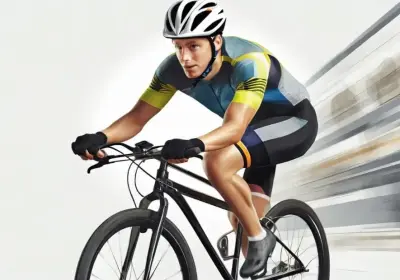


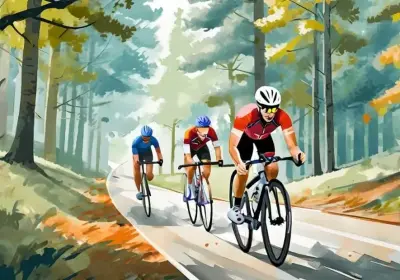
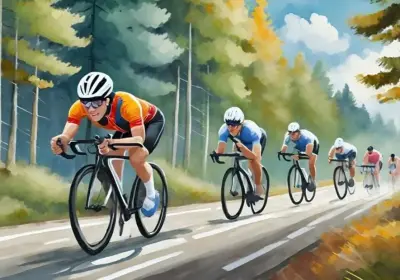


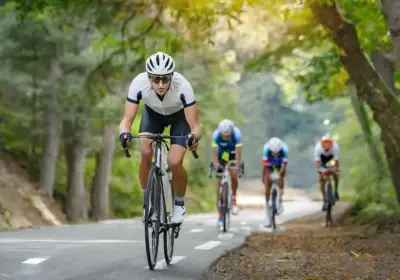



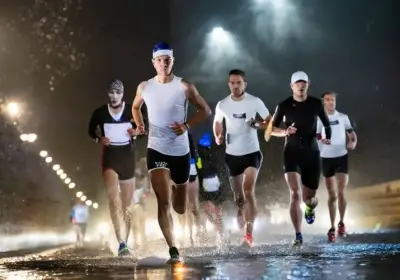
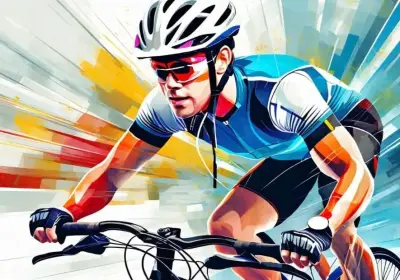
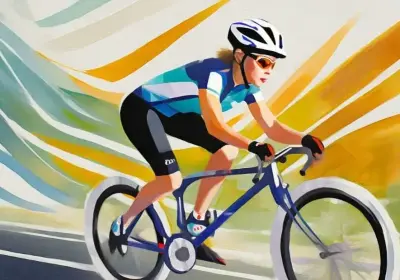
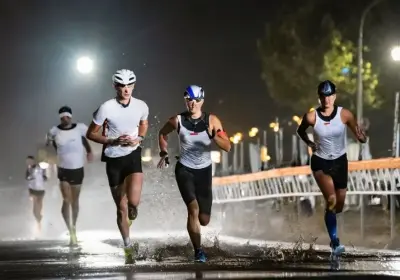

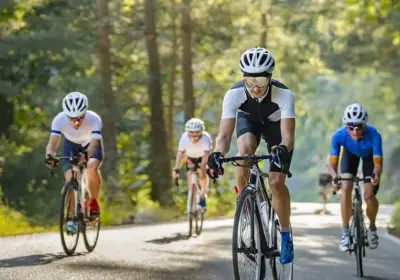


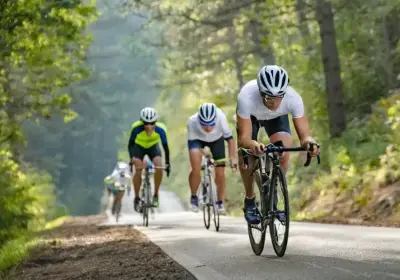

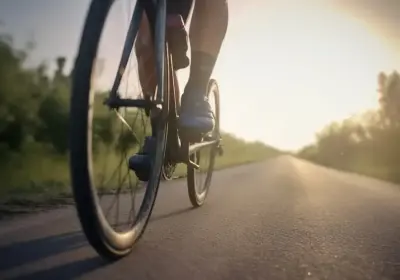
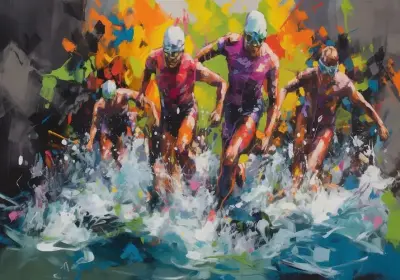
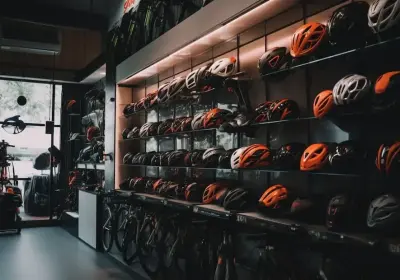
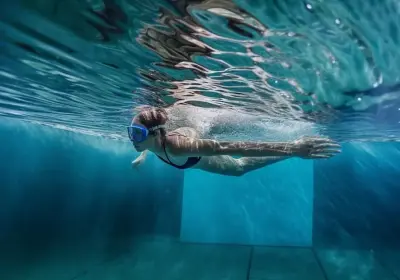
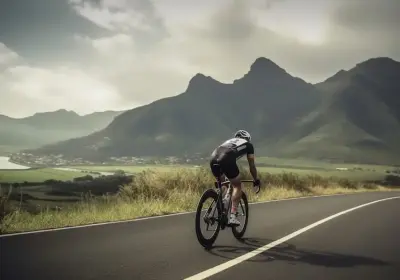
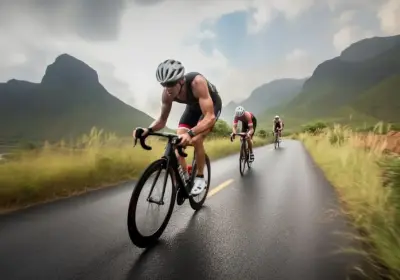








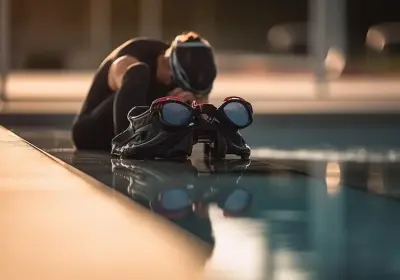
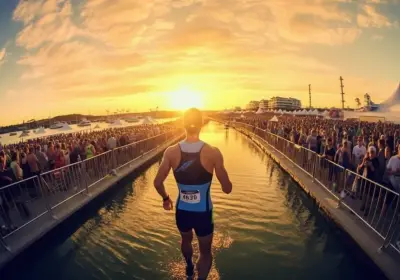





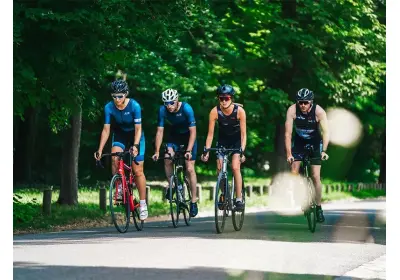


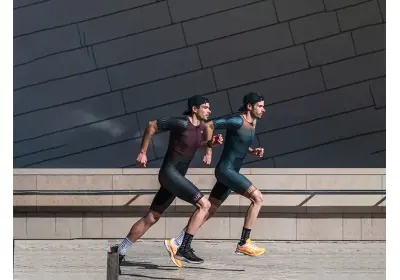
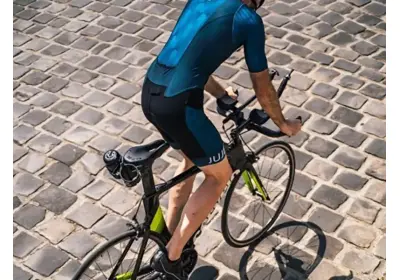
Leave a comment